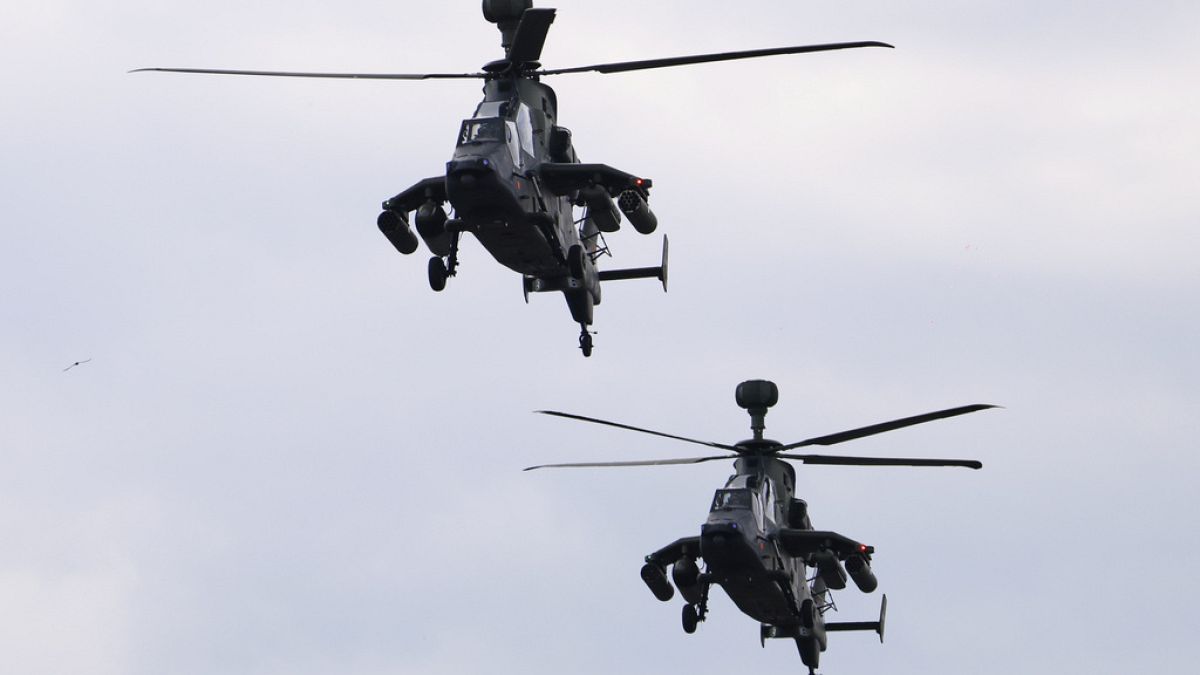Exercise Griffin Lightning has deployed 26,000 multinational troops across frontline NATO states, including Poland and the Baltic states, testing NATO capabilities and readiness for a potential invasion by Russia within the coming months or years.
In Estonia alone, almost 18,000 national troops led Operation Hedgehog, along with twelve other nations, as part of the overall Gryphon Lightning structure.
“When you hear the sound of the NATO jets around here, it may be loud, but to us we say it’s the sound of freedom,” Lieutenant Colonel Koosa of the Estonian Defence Forces told Euronews.
“When I went to school, we heard the sound of Soviet aircrafts, there was pictures of Lenin, we were paying with Rubles, with nothing to buy from stores,” he recalled.
“Now we’re in NATO we can make sure nothing like that ever returns,” he said.
The exercise is taking place amid a much more uncertain geopolitical context, with Germany’s defence chief saying NATO needs to prepare for potential war with Russia within the next few years.
General Carsten Breuer has said NATO is facing “a very serious threat” from Russia, as the Kremlin builds up its stock of tanks and “new military structures”.
Soldiers test themselves and the alliance for integration and interoperability, including fast, efficient decision-making in the event of an attack.
Operating in forests, woodlands and commandeering former Soviet missile bases as command posts, soldiers simulate the numerous circumstances likely to materialise in the event of war with Russia.
Armies are split into two sides, with each undertaking the role of the attacker or defender.
“We’ve got a few trenches out there where we’ll live and fight out of so if an enemy attacks or comes towards us, that’s where our main defensive area will be,” Kingsman Lewis Jackson, a young UK soldier, told Euronews.
His compatriot, Second Lieutenant David Brereton, said that being in Estonia, close to Russia, is important, but that the logistics for him and the other battlegroups were vital for readiness for a real-world scenario.
“We’re in an MDA – main defensive area – basically we’re tasked with defending the ground you can see behind us, basically stopping any movement north of that ground and repelling any attacks,” he says of his setup.
In Lithuania, the largest foreign deployment of Germany’s aviation brigade since the Cold War is participating in Griffin Lightning.
And while drones are emerging as the most dominant weapon technology of the Ukraine war, tanks and even paratroopers have a renewed relevance in Ukraine.
German Leopard 2 tanks were delivered to Ukraine in March 2023 after pressure from NATO countries. The tanks are deemed superior for their firepower and heavy armour.
In this exercise, Leopard 2 and Puma tanks are featured alongside Lithuania’s infantry fighting vehicles, showcasing interoperability on the battlefield during a simulated counter-offensive.
Despite political concerns about long-term US commitment to NATO and European Security overall, US paratroopers participated under a US-led exercise, Swift Response, alongside Griffin Lightning.
Captain Zachary Donner said US forces are integrating Ukrainian experiences on the battlefield.
“We’ve been keeping a pulse on the conflict and we’ve been using it to basically integrate our training, our comms and we’ve been taking lessons learnt from over in the Ukraine to basically develop what’s going on there to see what we can combat against,” he said.
He said US NATO troops in Europe, of which there are currently under 100,000 can be ready in a “moment’s notice”.
“The capability to rapid move into the locations are always here. The 173rd is postured in Italy and ready to go in a moment’s notice. The 82nd in arrear is also always on guard and on watch and ready to deploy within 24 hours,” he told Euronews.
Lithuanian Defence Minister Dovilė Šakalienė said the exercises are more necessary than ever, given the failure by US-led delegations to make any progress on peace talks between the US and Ukraine.
She also claimed that Russia is moving quickly with its armed forces reform.
“They have really transformed their economy to a wartime economy. They are as moving very fast with their armed forces reform – to have 1.5 million soldiers by end of year,” she told Euronews in Lithuania.
Read the full article here


